Abstract
1. The effect of milking goats 1-4 times an hour for 3-12 hr on the yield and composition of milk has been studied in fed and fasted animals at all stages of lactation.
2. It was essential to inject oxytocin (50-400 m-u. I.V.) just before each milking to remove all the milk already in the udder and then the yield was similar to that obtained on twice daily milking (105 ± 2·1 S.E.%). There were no significant differences between goats or between the two glands of one goat, even if one had been denervated by autotransplantation. However, the variation from hour to hour was 1·5 times greater than from day to day.
3. The claim of Zaks (1964) and Zaks, Natochin, Sokolova, Tanasichuk & Tverskoy (1965) that milking every 15 min always produces a large rise in milk Na and a fall in K and lactose, which is characteristic of alveolar milk, is not substantiated. In high yielding goats milking gently by hand or with a cannula caused a small change in K only, but vigorous hand milking exacerbated this fall and also caused a fall in lactose and a rise in Na and Cl. Still larger changes were produced by using excessively large doses of oxytocin (2500 m-u.) when there was also a rise in citrate and total nitrogen. Hourly milking in goats fasted for 24 hr had the same effect.
4. In fasted goats the milk yield fell to 90% within 8 hr and to 56 ± 2·1% of the previous level by 24 hr. It remained at this level for a further 10-12 hr on twice daily or on hourly milking. The yields of autotransplanted glands usually fell slightly but significantly more than that of the glands in situ. In most goats mammary blood flow was halved but in all animals there were large falls in mammary uptake of glucose, acetate and amino acids and greatly increased uptake of free fatty acids. There were significant differences between fasted goats on hourly milking.
5. It is concluded that, in spite of changes in milk composition, milking hourly can be a useful technique for studying milk secretion. The striking effects of a short fast in a lactating animal are emphasized.
Full text
PDF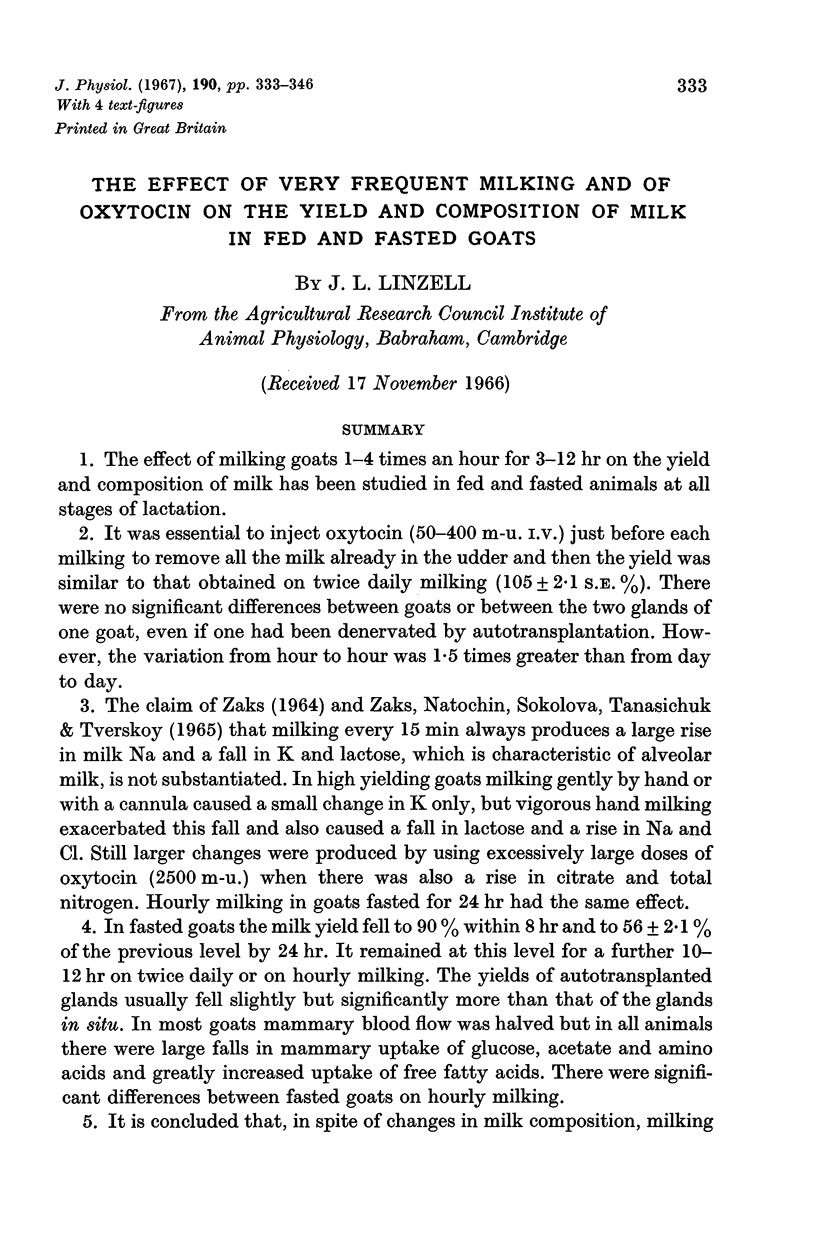
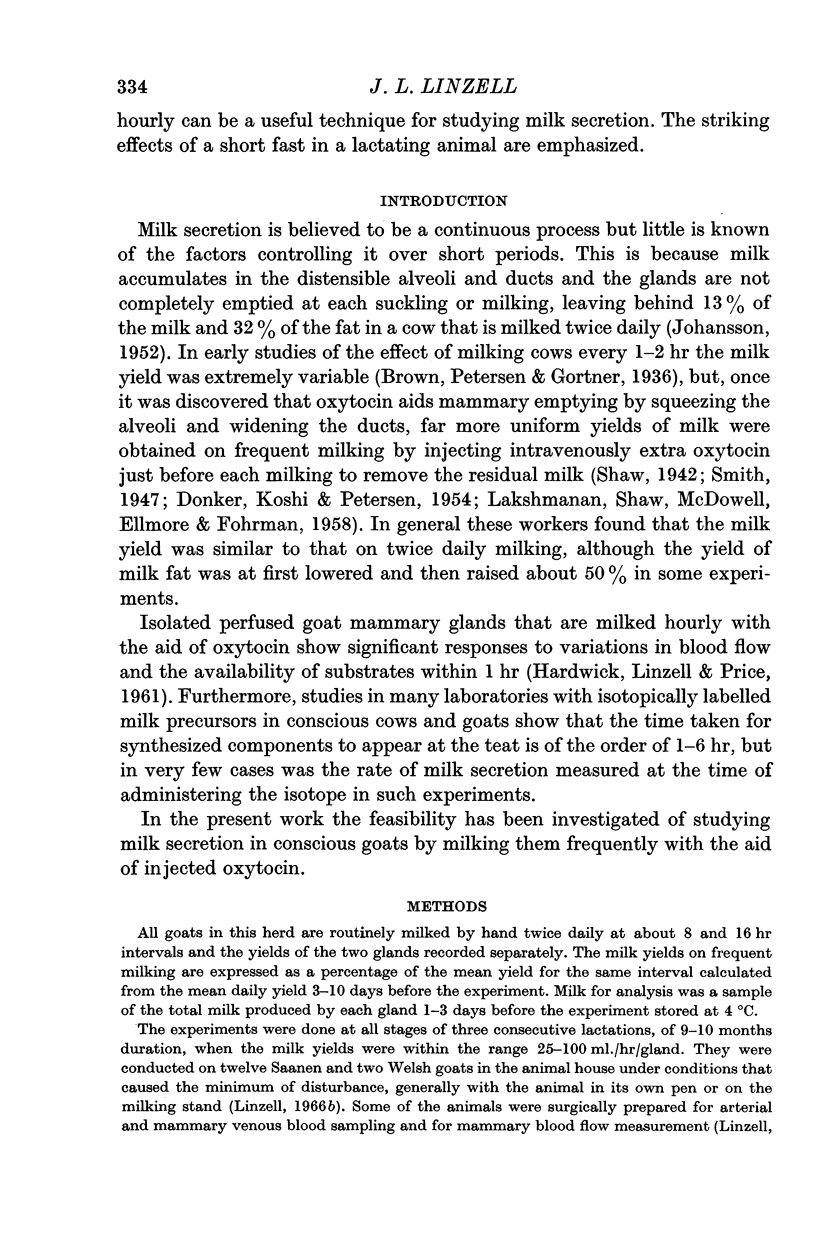
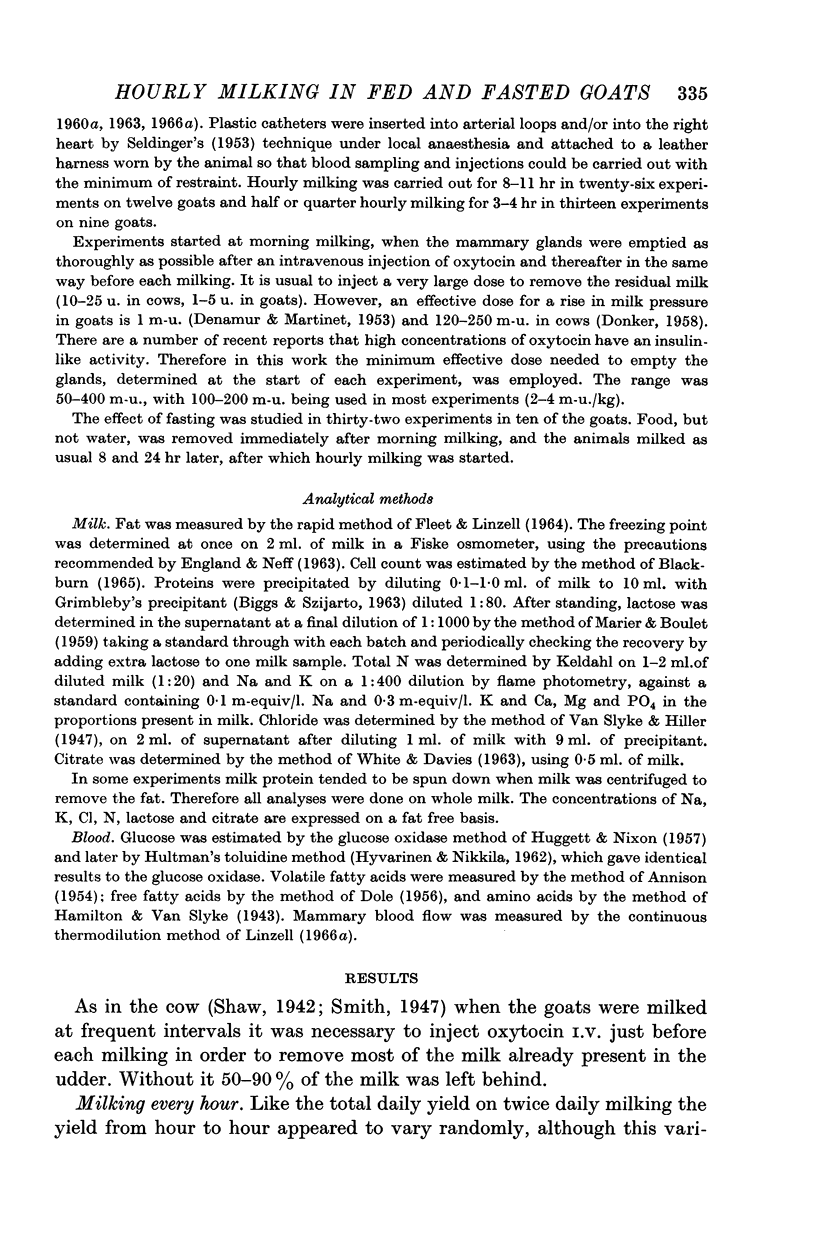
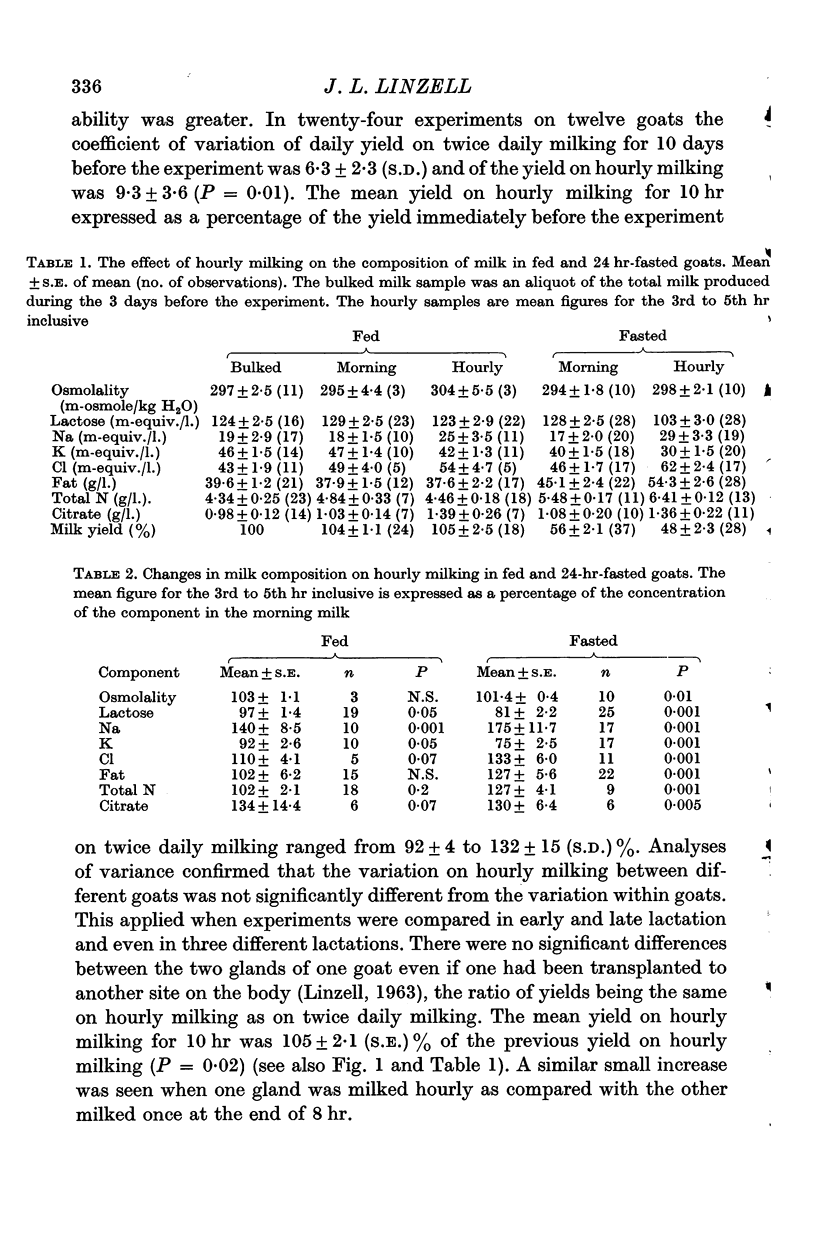
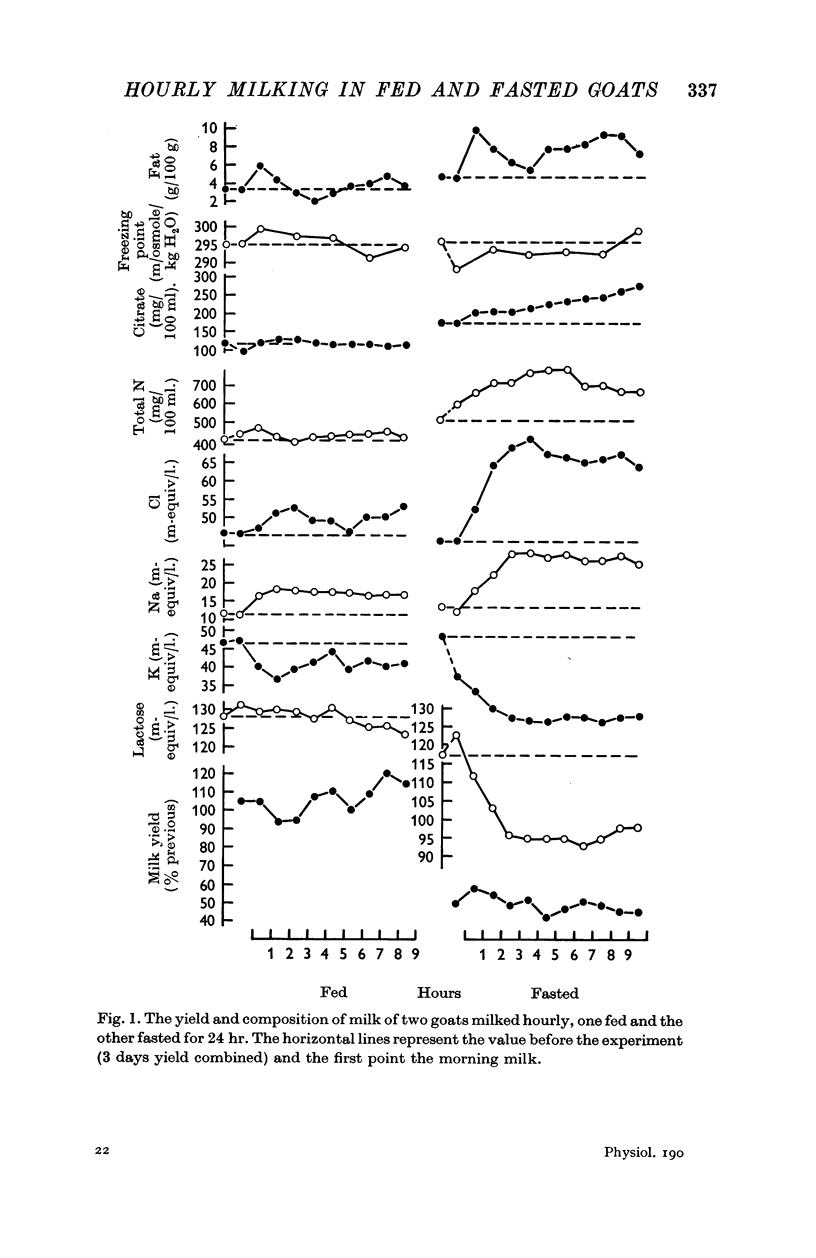
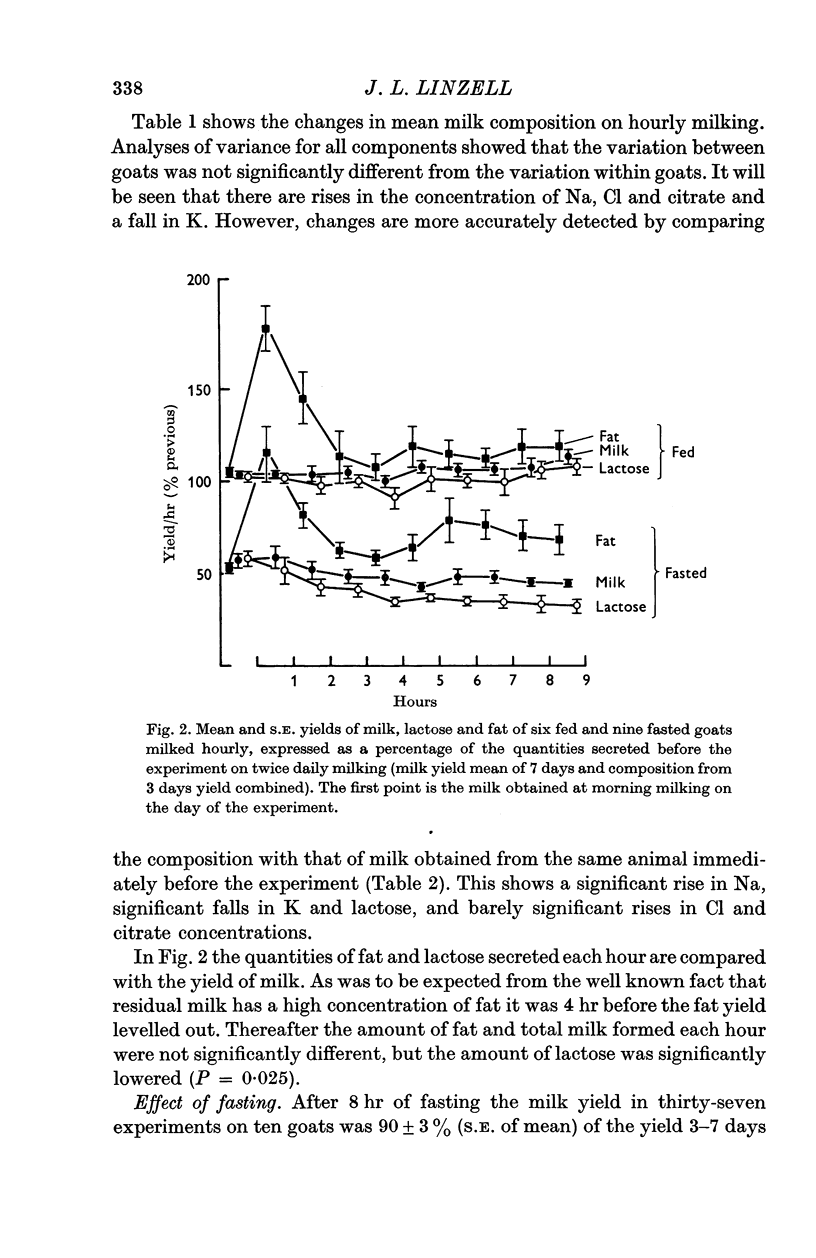
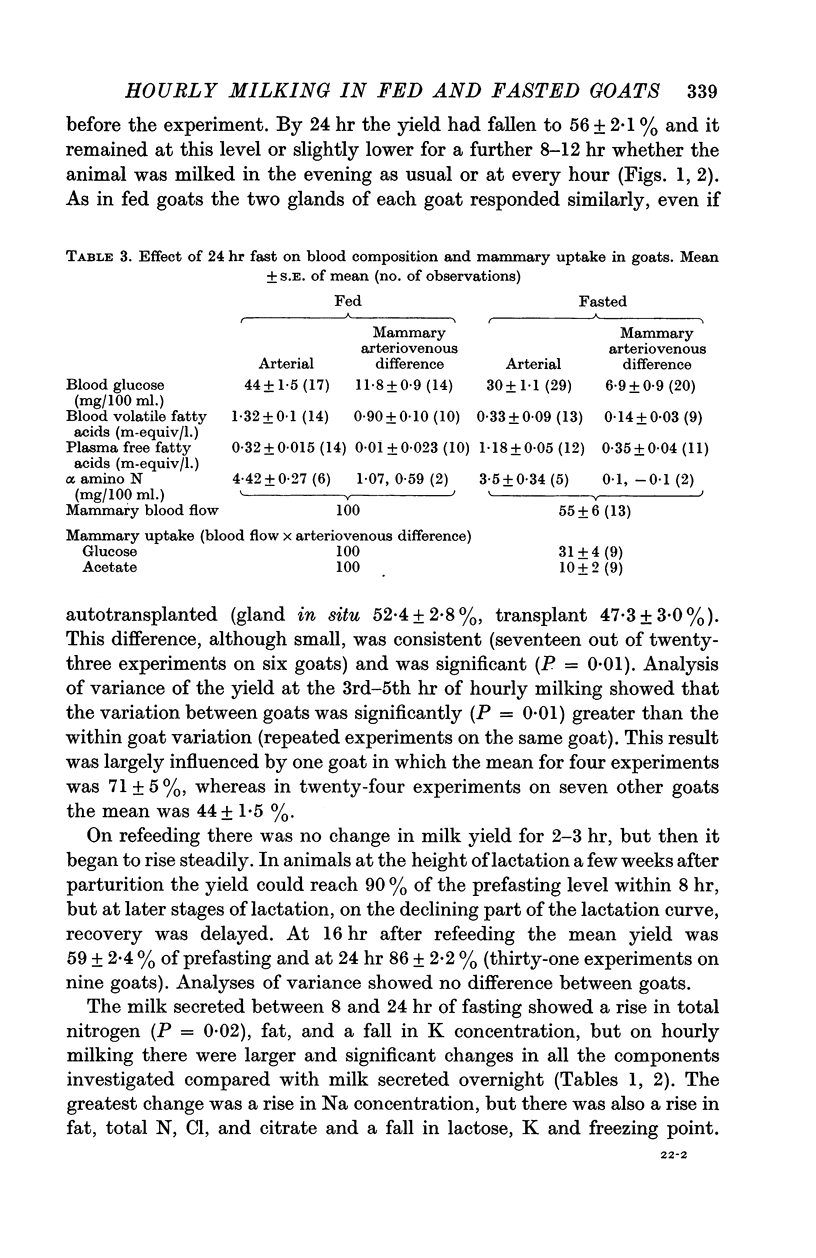
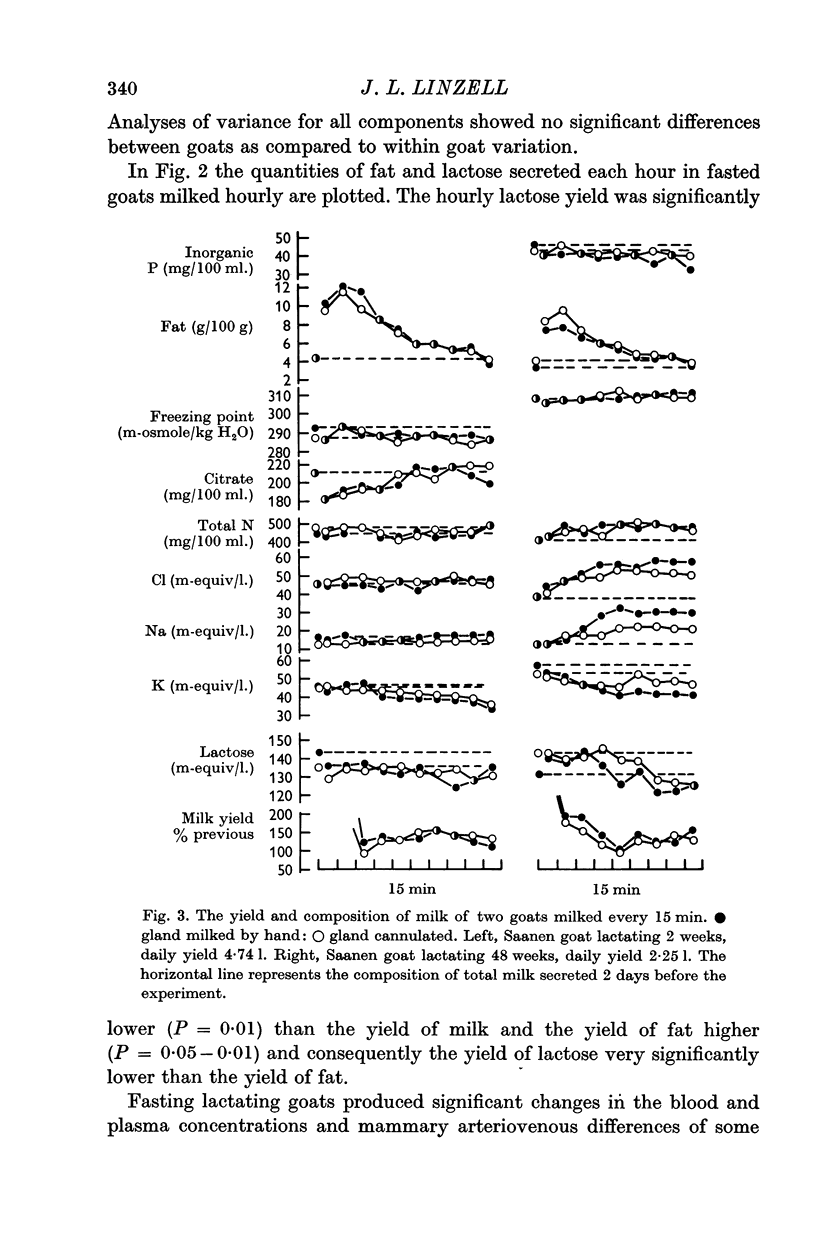
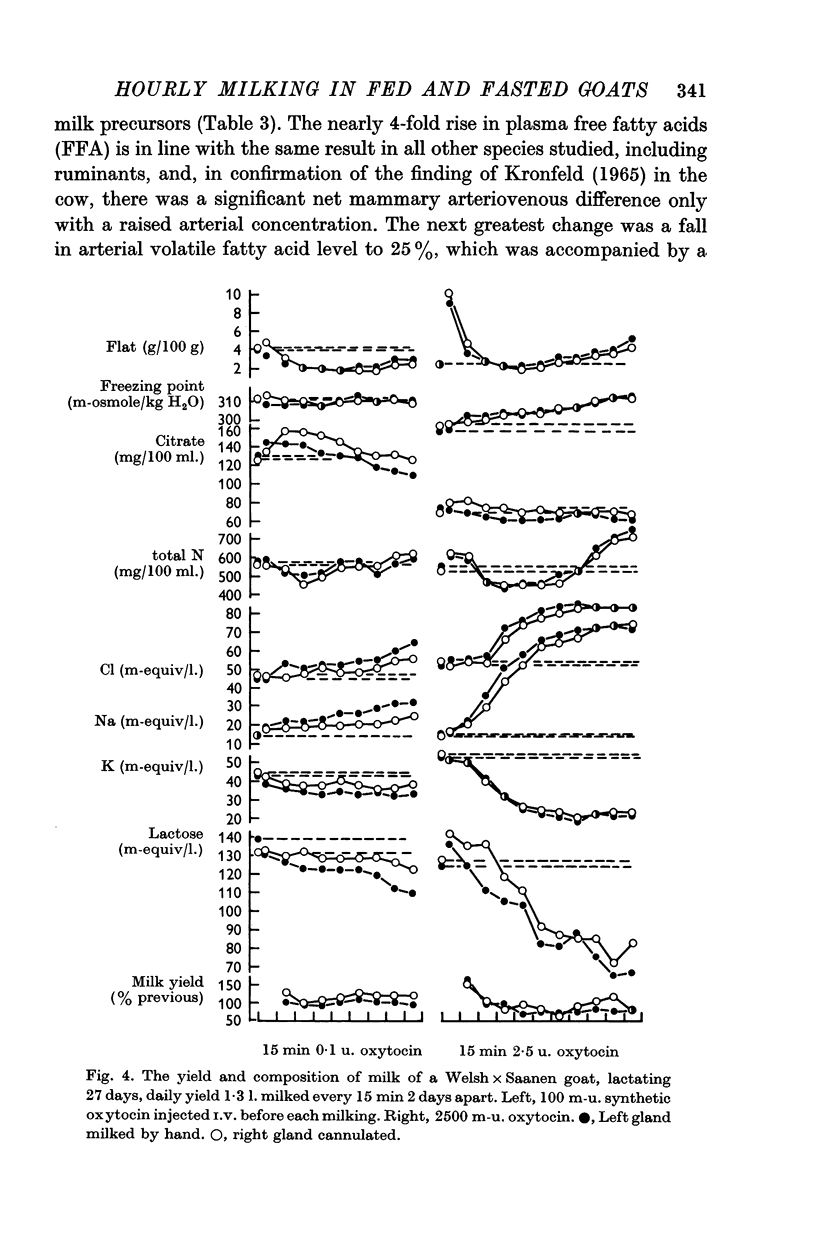
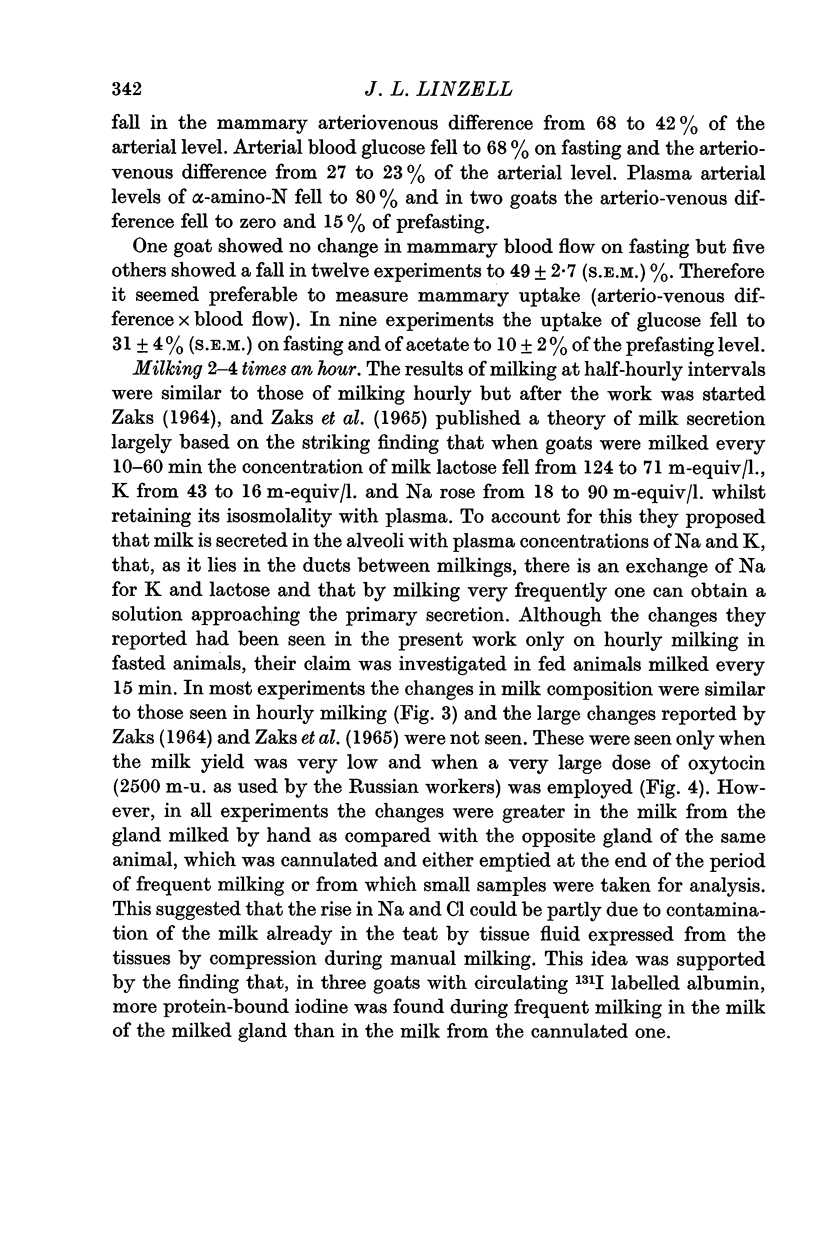
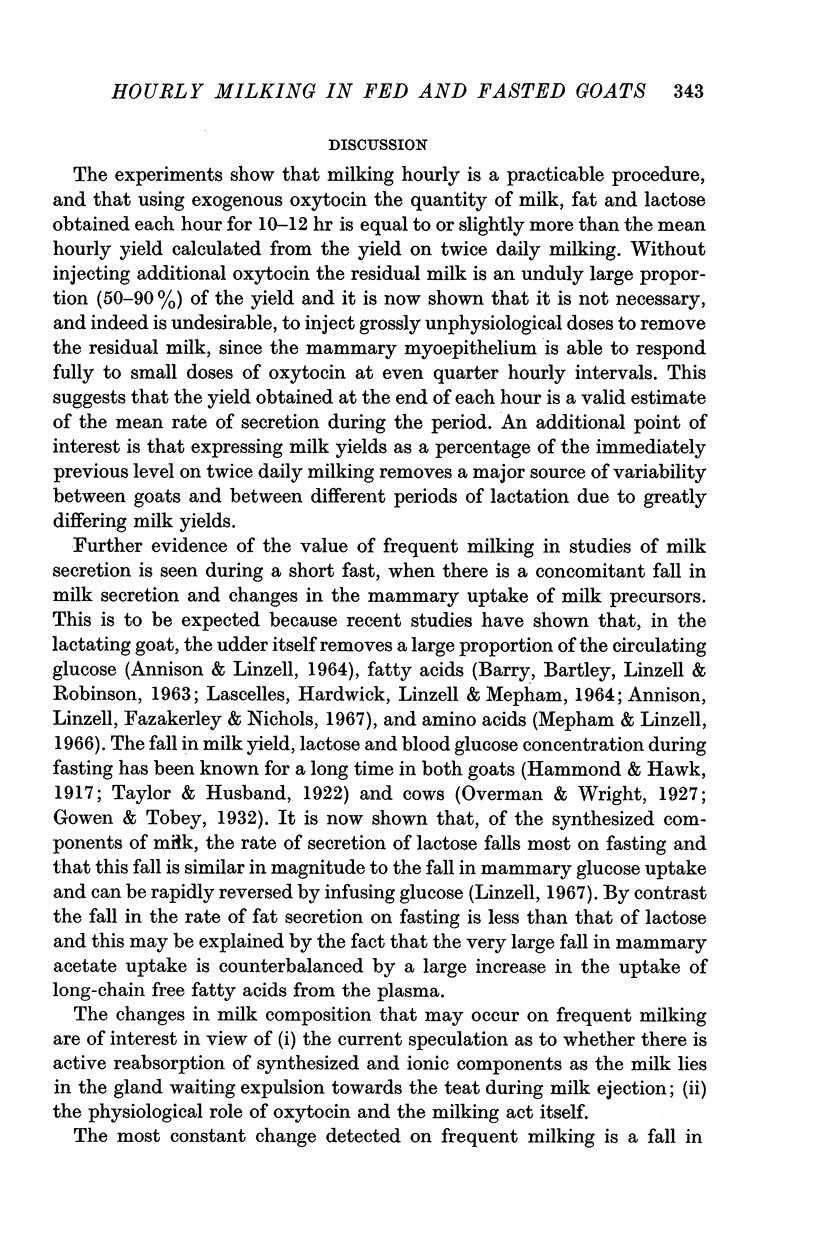
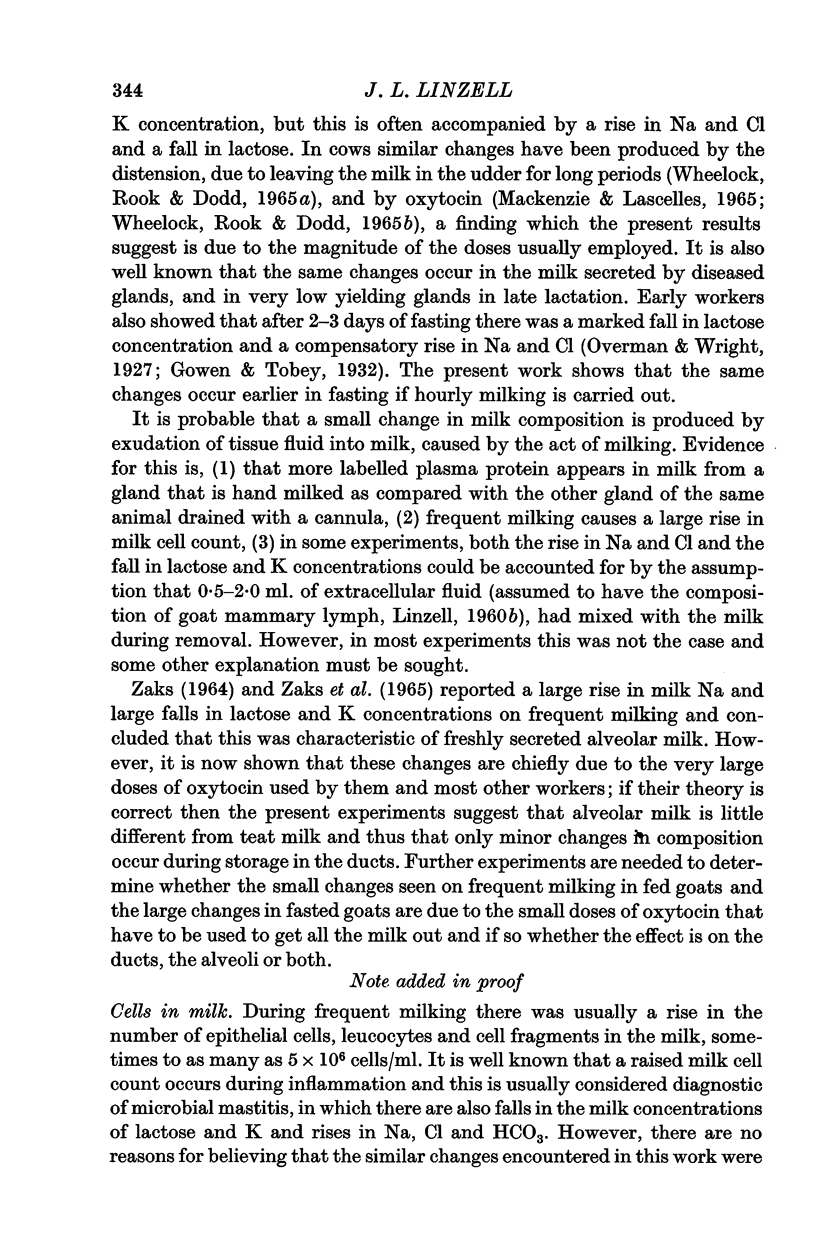
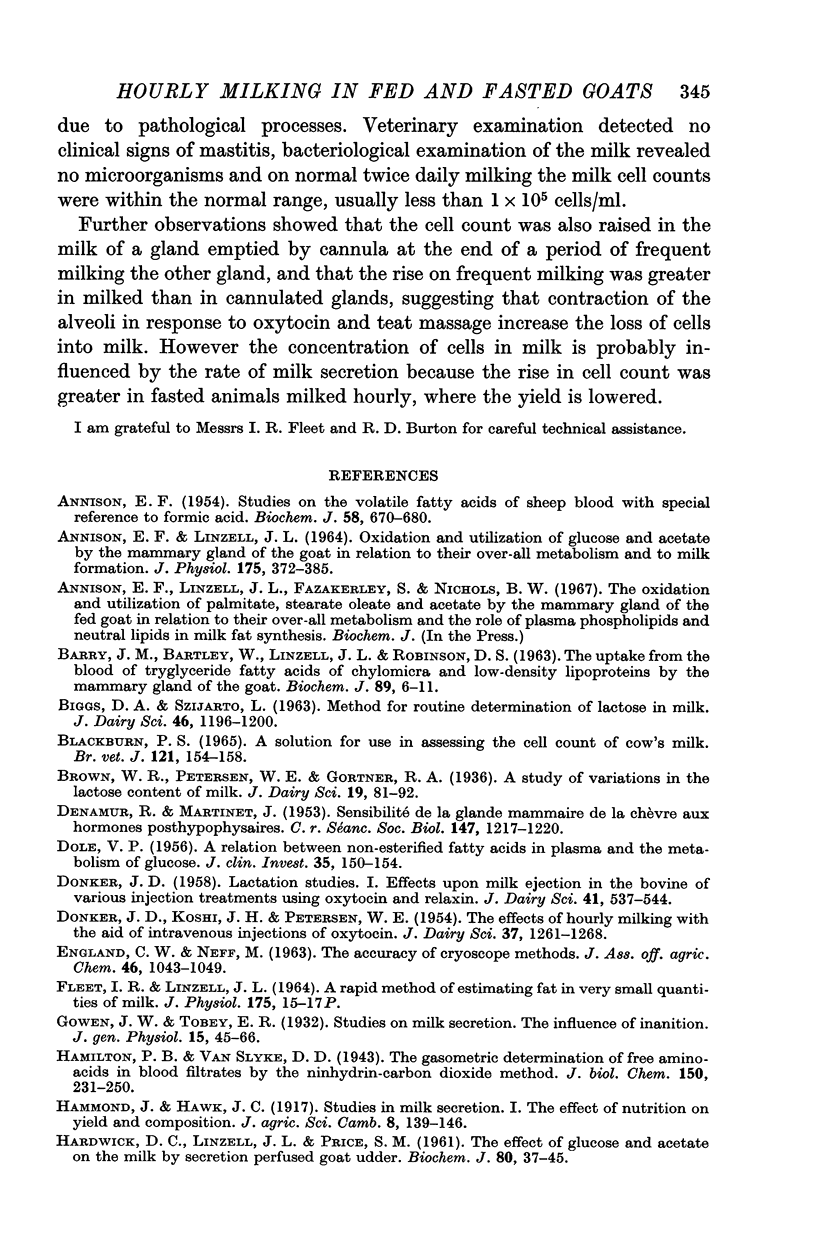
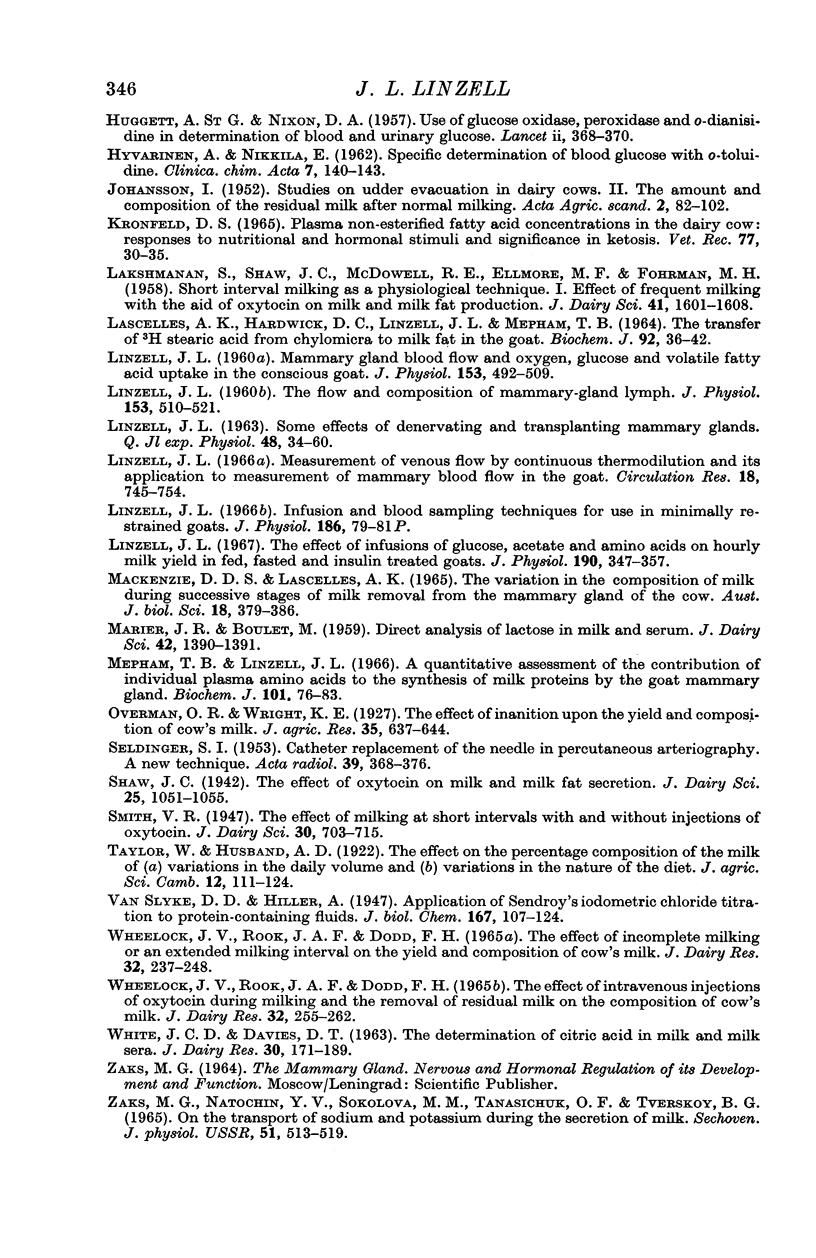
Selected References
These references are in PubMed. This may not be the complete list of references from this article.
- ANNISON E. F., LINZELL J. L. THE OXIDATION AND UTILIZATION OF GLUCOSE AND ACETATE BY THE MAMMARY GLAND OF THE GOAT IN RELATION TO THEIR OVER-ALL METABOLISM AND MILK FORMATION. J Physiol. 1964 Dec;175:372–385. doi: 10.1113/jphysiol.1964.sp007522. [DOI] [PMC free article] [PubMed] [Google Scholar]
- ANNISON E. F. Studies on the volatile fatty acids of sheep blood with special reference to formic acid. Biochem J. 1954 Dec;58(4):670–680. doi: 10.1042/bj0580670. [DOI] [PMC free article] [PubMed] [Google Scholar]
- BARRY J. M., BARTLEY W., LINZELL J. L., ROBINSON D. S. THE UPTAKE FROM THE BLOOD OF TRIGLYCERIDE FATTY ACIDS OF CHYLOMICRA AND LOW-DENSITY LIPOPROTEINS BY THE MAMMARY GLAND OF THE GOAT. Biochem J. 1963 Oct;89:6–11. doi: 10.1042/bj0890006. [DOI] [PMC free article] [PubMed] [Google Scholar]
- BLACKBURN P. S. A SOLUTION FOR USE IN ASSESSING THE CELL COUNT OF COW'S MILK. Br Vet J. 1965 Apr;121:154–158. doi: 10.1016/s0007-1935(17)41252-8. [DOI] [PubMed] [Google Scholar]
- DENAMUR R., MARTINET J. Sensibilité de la glande mammaire de la chèvre aux hormones posthypophysaires. C R Seances Soc Biol Fil. 1953 Jul;147(13-14):1217–1220. [PubMed] [Google Scholar]
- DOLE V. P. A relation between non-esterified fatty acids in plasma and the metabolism of glucose. J Clin Invest. 1956 Feb;35(2):150–154. doi: 10.1172/JCI103259. [DOI] [PMC free article] [PubMed] [Google Scholar]
- HARDWICK D. C., LINZELL J. L., PRICE S. M. The effect of glucose and acetate on milk secretion by the perfused goat udder. Biochem J. 1961 Jul;80:37–45. doi: 10.1042/bj0800037. [DOI] [PMC free article] [PubMed] [Google Scholar]
- HUGGETT A. S., NIXON D. A. Use of glucose oxidase, peroxidase, and O-dianisidine in determination of blood and urinary glucose. Lancet. 1957 Aug 24;273(6991):368–370. doi: 10.1016/s0140-6736(57)92595-3. [DOI] [PubMed] [Google Scholar]
- HYVARINEN A., NIKKILA E. A. Specific determination of blood glucose with o-toluidine. Clin Chim Acta. 1962 Jan;7:140–143. doi: 10.1016/0009-8981(62)90133-x. [DOI] [PubMed] [Google Scholar]
- KRONFELD D. S. PLASMA NON-ESTERIFIED FATTY ACID CONCENTRATIONS IN THE DAIRY COW: RESPONSES TO NUTRITIONAL AND HORMONAL STIMULI, AND SIGNIFICANCE IN KETOSIS. Vet Rec. 1965 Jan 9;77:30–35. [PubMed] [Google Scholar]
- LINZELL J. L. Mammary-gland blood flow and oxygen, glucose and volatile fatty acid uptake in the conscious goat. J Physiol. 1960 Oct;153:492–509. doi: 10.1113/jphysiol.1960.sp006550. [DOI] [PMC free article] [PubMed] [Google Scholar]
- LINZELL J. L. The flow and composition of mammary gland lymph. J Physiol. 1960 Oct;153:510–521. doi: 10.1113/jphysiol.1960.sp006551. [DOI] [PMC free article] [PubMed] [Google Scholar]
- Lascelles A. K., Hardwick D. C., Linzell J. L., Mepham T. B. The transfer of [3H]stearic acid from chylomicra to milk fat in the goat. Biochem J. 1964 Jul;92(1):36–42. doi: 10.1042/bj0920036. [DOI] [PMC free article] [PubMed] [Google Scholar]
- Linzell J. L. Measurement of venous flow by continuous thermodilution and its application to measurement of mammary blood flow in the goat. Circ Res. 1966 Jun;18(6):745–754. doi: 10.1161/01.res.18.6.745. [DOI] [PubMed] [Google Scholar]
- Linzell J. L. The effect of infusions of glucose, acetate and amino acids on hourly milk yield in fed, fasted and insulin-treated goats. J Physiol. 1967 May;190(2):347–357. doi: 10.1113/jphysiol.1967.sp008213. [DOI] [PMC free article] [PubMed] [Google Scholar]
- MACKENZIE D. D., LASCELLES A. K. THE VARIATION IN THE COMPOSITION OF MILK DURING SUCCESSIVE STAGES OF MILK REMOVAL FROM THE MAMMARY GLAND OF THE COW. Aust J Biol Sci. 1965 Apr;18:379–386. doi: 10.1071/bi9650379. [DOI] [PubMed] [Google Scholar]
- Mepham T. B., Linzell J. L. A quantitative assessment of the contribution of individual plasma amino acids to the synthesis of milk proteins by the goat mammary gland. Biochem J. 1966 Oct;101(1):76–83. doi: 10.1042/bj1010076. [DOI] [PMC free article] [PubMed] [Google Scholar]
- SELDINGER S. I. Catheter replacement of the needle in percutaneous arteriography; a new technique. Acta radiol. 1953 May;39(5):368–376. doi: 10.3109/00016925309136722. [DOI] [PubMed] [Google Scholar]
- Zaks M. G., Natochin Iu V., Sokolova N. N., Tanasiichuk O. F., Tverskoi G. B. O transporte natriia i kaliia pri obrazovanii moloka. Fiziol Zh SSSR Im I M Sechenova. 1965 Apr;51(4):513–519. [PubMed] [Google Scholar]


